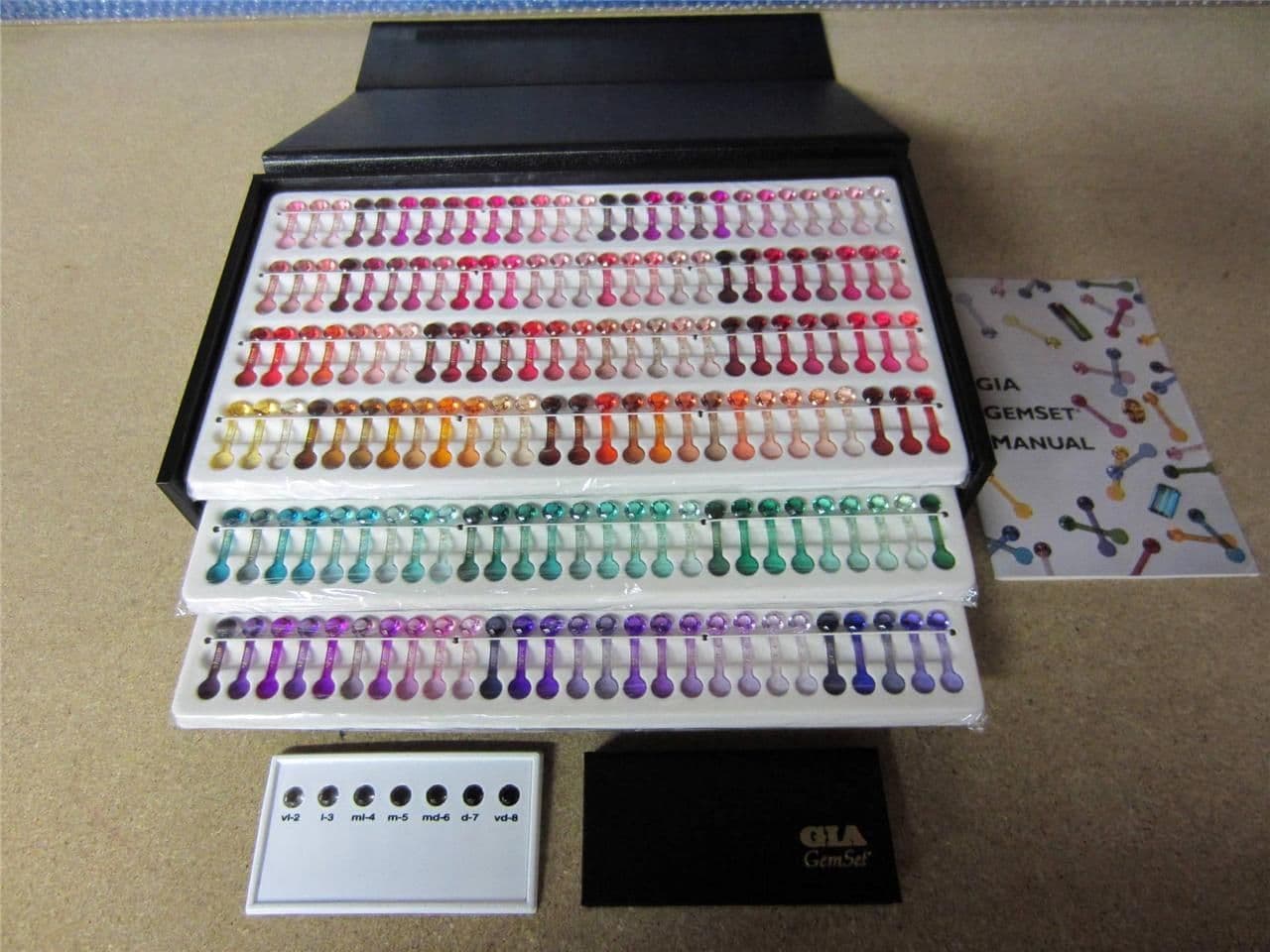What Happened to the GIA GemSet Color and Hue Wheel?
The GIA GemSet offered plastic color masters for color grading gems. It's no longer in production. Software alternatives exist but still face limitations.
Multiple Versions of the GemSet
The GIA made several different sets. The full set included 324 samples and a storage case with three trays. Another contained the samples in binders. The most common version seems to be the "Hue Wheel" GemSet, shown below. This is the one I have, and I love it. I think I bought it for around $350 in late 2014 from a retiring jeweler. He used it for his GIA coursework in 1992. I found the picture of this one on an old eBay listing, although mine is identical.
Here, you can see the full set in practical use.
Software Alternatives for Color Grading
As an alternative, the GIA now uses a software color grading system. Invented by Israeli gem dealer Menahem Sevdermish, Gemewizard can identify 31 master color hues. This program recreates each hue in six color tones. Then, it divides each tone into six levels of saturation. All told, this system makes available 1,116 gemstone colors. Students and dealers can download depictions of these gemstone colors.
The software approach has been suggested before. However, computer monitors vary in their reproduction of colors. This remains the primary obstacle to this alternative.
Donald Clark, CSM IMG
Related Articles
Recommended Gemology Tools and Instruments
“Genesis And Classification Of Agates And Jaspers: A New Theory” Book Review
Gemology Interactive Media Reviews
Ruby and Sapphire Grading Tools
Never Stop Learning
When you join the IGS community, you get trusted diamond & gemstone information when you need it.
Get Gemology Insights
Get started with the International Gem Society’s free guide to gemstone identification. Join our weekly newsletter & get a free copy of the Gem ID Checklist!
